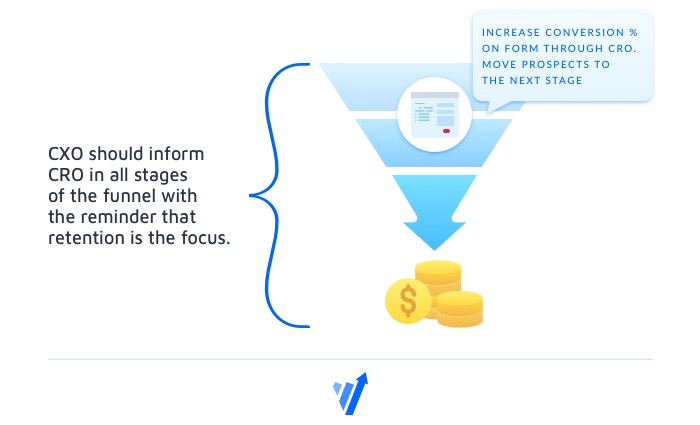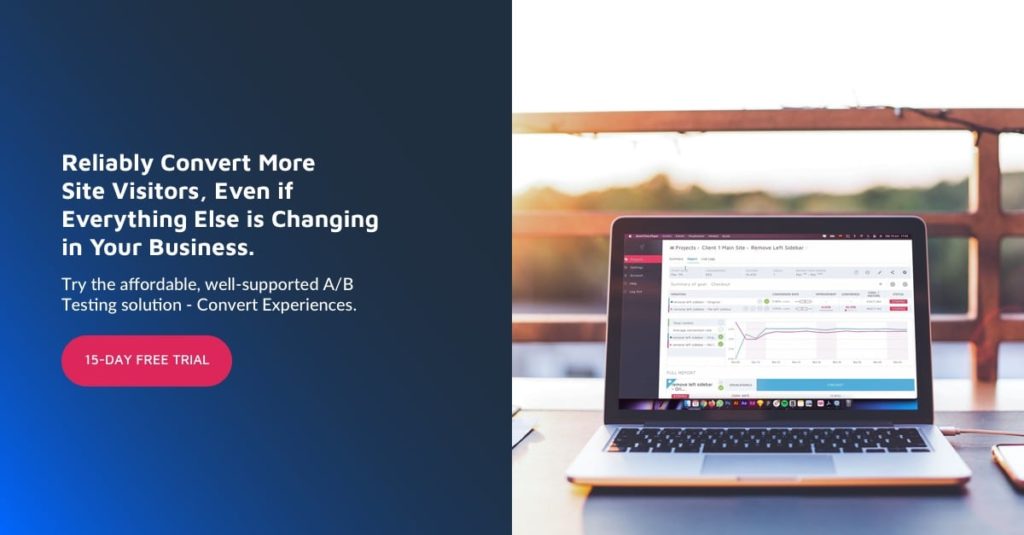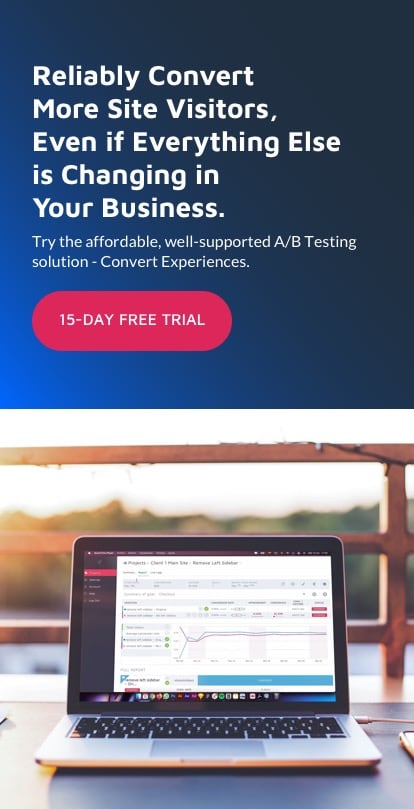The Silent Hero of the Pandemic: Retention. And How Optimizers Are Getting Onboard with the Retention Economy
This blog is the first in a series of interviews with thought leaders, experts, and serial entrepreneurs who have put sustainability at the core of their business and the story they tell about their purpose in the world. Anything new or novel always piques interest. But as the pandemic has taught us, consistency, stability, and sustainability see us through the “tough times”. It’s my sincere hope that these articles will encourage folks to view their company and their metrics through a different set of lenses.
What is your core business offering?
Is it a tool for businesses to track their leads, a box of kitty litter, a course to manage time?
Or is it a way your users can turn their buyers into fans, the magic element that keeps your home from stinking up, or indeed 3 extra hours every week to do whatever it is that you want?
The destination of this post is certainly not another glib spiel about branding. But it’s easiest to start here because the impression of the pivot (or transformation) you promise your users has a lot to do with what comes next!
Your Big Promise. In Your DNA? Or Just “Copywriting”?
The heyday of the USP is behind us.
The story of how a business is different no longer tantalizes.
Folks don’t care about the specifics of how you are different. Their interest is tied to what this difference means for them. They want to learn more about their own big transformation that your “uniqueness” facilitates.
And most importantly, they are savvy enough to question how you plan to deliver on this transformation.
Your marketing can make all the promises in the world.
If sales, support, product, and development do not understand brand values and their role in making your customer transformation a reality, no number of clever, in-the-moment tactics can lead to consistent, sustainable results.
Because people notice discrepancies in the walk and the talk and either move away to more aligned businesses or call brands out on the BS.
Done right, the purpose of the business, the visceral reason why it exists, informs the positioning. How the positioning is communicated impacts the transformation users expect from the brand.
It is a “from the inside to the outside” job. And it should never be the other way around. Cause if it is… you set your buyers up for disappointment.
Convert’s Purpose is To Create Great Experiences – For Now & Future Generations.
But What Does It Mean to Converters?
What Does It Mean for Our Users?
We Have Built Our Conscious Business Practices to Reflect Our Purpose in the Transformation We Promise Our Customers & How We As a Team Deliver on It.
The Experience Economy Revolution & Why It Fell Short
The Experience Economy is seminal in many ways.
It’s offered companies a way to break the wheel of commoditizing.
You can duplicate features. You can even copy the mechanism of delivery. But the way you make your buyers feel — that’s unique. That can’t be replicated. And the best part is, it does not need to be duplicated.
No two businesses are alike. Even if they have the same purpose, the folks who live and power that purpose are not identical. This introduces an element that is unique to every company. Markets may be saturated for technology, but they are never saturated for the human touch. And that’s what the Experience Economy promises. The freedom to break free of the formal facade of a business and bring the various facets of HQ (Human Quotient) to the process of delivering outcomes.
Since its launch, the Experience Economy has gone through several iterations. It’s matured into the Transformation Economy where customer experiences are more tangibly tied to the end goal of a desired user transformation. Brands have been quick to realize the power of this “pivot”, this “before” and “after”. They’ve used it, at least in execution, to drive their communication.
And then the pandemic hit.
It did two things:
#1: It threw a wrench in traditional acquisition plans.
#2: It brought to light the reality of delivering on expectations in the Experience Economy.
For most businesses… the sight wasn’t pretty.
New leads and closes came to an abrupt halt and they scrambled to find a solution.
As some companies sank and some rose to new highs, the truth was evident — success was being driven by customers who stayed, not new customers mesmerized by hollow promises.
And the ones who stayed did so based on how well the Experience Economy was executed for them.
Did they get their transformation?
Did they build human connections with the brands they used? Did they feel solidarity with the community?
The Brave New World of the Retention Economy
Yes, there is nothing ground-breaking about retention. But even though brands have known about retention all along, it is only now that they are viewing the humble, unsexy retention with new respect. They are seeing retention as the factor that probably saved their business from going belly up in 2020.
Sure, some organizations have grown massively in the turbulence. But they are probably either outliers or brands already living the truth of retention.
For the rest, the insight is new.
Retention is the metric that closes the loop for the Experience Economy.
It quantifies the effectiveness of the experiences you have delivered as a brand, and how successful you have been at making your famed transformation promise stick.
So, should you give up on acquisition?
Not at all.
On the contrary, all the traditional strategies and tactics that you have used for acquisition only get refined when the focus is on retention. It is a complex and delicate balance.
Casey Winters, Chief Product Officer at Eventbrite, says that sustainable growth can be measured by evaluating how retention loops (ways in which retention of existing customers can drive new acquisition – through invites, referrals, etc.) are capable of growing the size of acquisition cohorts, month over month.
I had the opportunity to interview Speero’s Annika Thompson about the nuances of this new reliance on retention and she spoke at length about:
- The Retention Economy & business sustainability
- CXO (Customer Experience Optimization) and how it ties to retention
- The controversial question of CXO vs CRO
- 5 steps businesses can take to integrate CXO with their Ops DNA

Sustainability Lessons from the Zone Where Startups Die
You can’t blame the startups.
Everyone wants a piece of you if you have those magic acquisition numbers in place. VCs take a look at your growth curve and the steeper that curve, the more the millions.
Funding done. Everyone lives happily ever after. Congratulations, you are the new unicorn.
If only…
It’s almost in bad taste to ask questions beyond “happily ever after”. Turns out though that the fairytale endings of mammoth funding also have a hard road ahead.
When the cost of acquisition outweighs the lifetime value of a customer, startups enter a downward spiral – the zone of destruction – that’s hard to get out of. If this continues… each new customer acquisition can actually end up hurting the business.
The retention economy
According to Annika though, VCs and their firms are waking up to the longevity potential of the businesses they back. They’re asking the tough questions:
- How do LTV and Cost of Acquisition (CoA) stack up?
- How committed are the existing buyers to the brand and the narrative (as reflected in the softer metrics like the NPS score and, of course, retention)?
Don’t get me wrong, growth is still an indicator of success. But it’s essential that the growth in numbers be grounded in solid retention so that the company can weather sudden changes in the market and count on the existing customers’ loyalty to take it through bouts of uncertainty.
Being retention-focused is being smart.
It is playing the long game. It is ensuring that the small wins in the present translate into tangible revenue lifts for the business and that progress further up the funnel does not disappear by the time the impact reaches the sections where it really counts.
The Best of Both Worlds: Meet Customer Experience Optimization (CXO)
CXO takes customer experience and puts it at the heart of the experimentation process.
Annika Thompson, Speero.
By now we know that customer experience matters. And that it’s best measured in terms of retention.
By melding the largely qualitative definition of customer experience with the rigorous, number-driven discipline that is optimization, CXO equips businesses with a toolbox of proven ways in which they can render user interactions with their touchpoints frictionless, authentic, and ultimately revenue-boosting for the long haul.
To achieve this outcome, CXO leverages analytics, A/B testing, personalizations. But it is more than disparate strategies or tools. CXO is the unifier, the silo breaker, the common thread running through the entire business funnel, from pre-purchase, to purchase, to retention and even beyond.
How can businesses use CXO to grow sustainably
Is It Bye Bye CRO?
Conversion rate is not a vanity metric. It has become a narrow term though.
Annika Thompson, Speero
Having led the CRO revolution from the front as CXL Agency, Speero is still invested in conversion rate optimization. According to Annika, the problem lies not with the conversion rate per se, but with the baggage of restrictions that comes with the term “CRO”.
Conversion rate is essential. If you run User Testing on your form and deploy A/B tests to measure the impact of the changes made, then the conversion rate is an easy-to-understand, relatively quick measure of success. If you tie form optimization solely to revenue, you may have to wait a while before you get any sense of a payoff.
Conversion rate is incredibly important in such a setting.
What you should not do is what data science has always warned against: interpret without context.
We wrote a comprehensive guide that explains everything you need to know about Conversion Rate Optimization, from start to finish. A guide that tells you exactly what CRO is and isn’t and the best practices for using CRO in your business.
Conversion rate is a snapshot in time. It is what happens in one isolated part of the funnel. Without the context of all the funnel stages, it can be irrelevant at best and dangerous at worst.
If you remove most of the form fields from your sign-up, you will (probably) see a significant improvement in your conversion rate. But the conversions will be garbage.
Your MQL numbers will drop. And at the end of the day, you will be onboarding customers who aren’t properly qualified and pose a high churn threat. The antithesis of the scenario that the Retention Economy advocates.
Remember, the goal is not Conversion Rate Optimization for the sake of CRO!
CXO vs CRO
The goal of Customer Experience Optimization is to enhance retention. CRO happens to be a time-tested way of increasing the number of people who move from one part of the funnel to the next because the roadblocks that were preventing them from doing so are no longer present.
What is Customer Experience Optimization (CXO)?
CXO is the most complete measure of how the incentivized actions you prompt users to take through your CRO efforts translate into retention, revenue, and profits. And that’s what you are optimizing for anyway.
The math behind CXO
Staying Sustainable with CXO: 5 Steps To Become a Part of the Retention Economy
How to get started with CXO
The benefits of uniting around the core metric of retention are pretty obvious.
And CXO offers a way to put this sprawling principle into a framework. A series of steps to start focusing more and more on the end goal of retention.
Annika broke down the 5 key steps that companies can take right away to start incorporating retention in their DNA.
- Understand the Current State of Customer Data
99.5% of collected data does not get analyzed. This means data does not get the attention it deserves and there will be blind spots when you start probing its integrity. It might feel overwhelming for most businesses, so these are three initial questions to ask:- Where does the data I need live in the present?
- Can I trust this data?
- Yes, trust is subjective. So you need to quantify “trust” here. This is done by asking the next question.
- What is missing from this data?
Europe’s reaction to the data misuse was the Data Protection law, the GDPR (General Data Protection Regulation), which forces any company handing data to walk the extra mile to safeguard their client’s data.
Dionysia, Head of Privacy, Convert.com
The US’s reaction was the CCPA (California Consumer Privacy Act), Nevada SB 220, and more recently, the California Privacy Rights Act 2023.
The aim of these laws is essentially about two things, the ethical use of personal data and keeping that personal data secure.
This has forced companies from all over the world to start strengthening their data security and privacy.
With these privacy laws, the EU and the US also introduced a new legal requirement: privacy by design.
At its core, privacy by design calls for the inclusion of data protection from the onset of the designing of systems, rather than an addition
It is critical to understand the limitations of the data you possess before you work with it to answer business questions.
Don’t hesitate to wade in the trenches and judge how best to use data to drive strategic growth in your organization (through CXO or otherwise). If you don’t, you may end up overbuilding (collecting data that is not aligned with your company strategy) or underbuilding (missing opportunities because there isn’t enough data to signal its presence in the first place). - Get Metric Baselines & Make Them Accessible
Irrespective of the size of a business, many struggle to get a sense of where their key metrics are at in the present.
Since CXO calls for concerted effort in different parts of the funnel for the end goal of boosting retention, the entire company should be privy to relevant data to understand how their experiments impact it. Now, data accessibility is a sensitive subject. Businesses must get a grasp on:- Who has access to what data
- How data is shared between roles and the weak links in this flow
- The data management lifecycle and if it complies with privacy mandates
- Ensure Rigour When Mining For Insights
Data and interpretation go hand in hand. As soon as you see data, your mind applies the reality it understands — with its shortcomings, biases, and models — to it. You should listen to the stories data has to tell. Not doing so is absolutely a wasted opportunity.
However, the stories you take away from the data should be largely objective and not the stories you would like to hear.
Optimization experts have always known this: it is incredibly easy to manipulate data. And often we do it unknowingly.
Working with hypotheses that are solely based on opinion deploy the power of experimentation in areas that don’t have impact to yield. A good way to prevent this is to educate team members about data — what it can and can’t do. They do not have to become data scientists overnight. But as Ben Labay says in his post, they should be humble about what they think they know and be careful of generalizing their conclusions. - Evangelize Experimentation
Experimentation, by nature, is dedicated to the exploration of the unknown and thus learning.
An obsession with conversions in one part of the funnel can lead to an inadvertent negative impact. We have established this.
The obsession though can also translate into data manipulation, a focus on finding only winners – because if you look hard enough, you can spot a winner in almost everything.
Having an “Experimentation Mindset” is the true guard rail for CXO — the idea that we use conversion rate optimization in the present to consistently grow long-term KPIs, solve real customer problems, and do it in a way that celebrates failures (learning) too. - Close the Loop. Build a Community.
What does a community have to do with retention? Or CXO? As it turns out, everything.When people feel like they belong, they don’t necessarily need to or want to go buy from a competitor.
Annika ThompsonHow to build a community using CXO
Plus, a community is a cauldron of ideas.- It is an excellent place to conduct Voice of Customer (VoC) research. Communities let you borrow the way your real customers communicate, without breaking a sweat.
- If you’re looking to diversify and launch new products, the community acts as your informal focus group.
- Communities voice friction. And this friction can generate hypotheses worth testing.
So how exactly do you go about building a community? Peep Laja shares two non-negotiables to keep in mind. They save your community from being a mass of followers who don’t come together for a shared cause and thus aren’t loyal.
Retention has been the silent hero of the Pandemic. And it’s time to bring it to the forefront.
The obsession with mindless acquisition has seen its peak. But old habits die hard. Being an industry that is built around questioning the status quo, optimizers, and optimization, in general, can though pave the way for a more sustainable business route.
Are you onboard?
Written By
Annika , Trina Moitra


Edited By
Carmen Apostu




